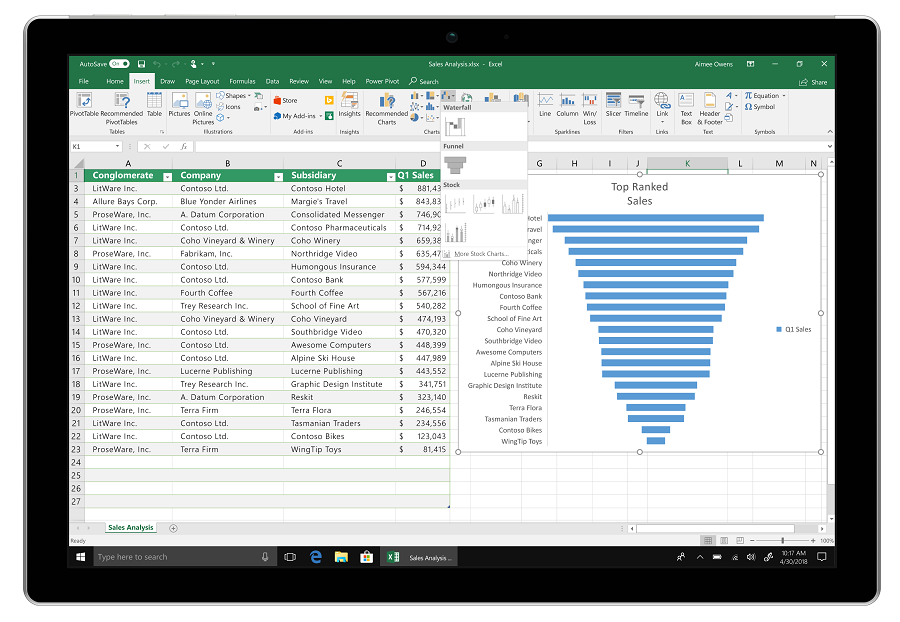
- #WHAT FILE TYPES ARE AVAILABLE IN OFFICE 2016 FOR MAC EXCEL HOW TO#
- #WHAT FILE TYPES ARE AVAILABLE IN OFFICE 2016 FOR MAC EXCEL FOR MAC#
- #WHAT FILE TYPES ARE AVAILABLE IN OFFICE 2016 FOR MAC EXCEL CODE#
Saves settings such as formatting, headings, formulas, VBA macros, and custom toolbars.
#WHAT FILE TYPES ARE AVAILABLE IN OFFICE 2016 FOR MAC EXCEL FOR MAC#
Compatible with Excel 98 through Excel 2004 for Mac and Excel 97 through Excel 2003 for Windows. Saves the workbook as a template that you can use to start new workbooks.
#WHAT FILE TYPES ARE AVAILABLE IN OFFICE 2016 FOR MAC EXCEL CODE#
Cannot store VBA macro code or Excel 4.0 macro sheets. Saves settings such as formatting, headings, formulas, and custom toolbars.

Saves the workbook as an XML-based template that you can use to start new workbooks. Cell properties, formulas, graphics, and other formatting are not preserved. Preserves VBA macro code and Excel 4.0 macro sheets.Įxports the data on the active sheet to a text file that complies with UTF-8 Unicode encoding standards. Cannot store VBA macro code or Excel 4.0 macro sheets.Ĭompatible with Excel 98 through Excel 2004 for Mac and Excel 97 through Excel 2003 for Windows. The default, XML-based workbook format for Excel 2016 for Mac, Excel for Mac 2011, and Excel for Windows.

To convert the other sheets in a workbook, switch to each sheet and save it separately. If you are saving your file into a different format, in most cases, Excel converts only the active sheet. The file formats that are listed in the Save As dialog box vary, depending on what type of sheet is active. Some of the content in this topic may not be applicable to some languages. If you want to solve a workbook model that is stored on your local PC, use the Solver included with desktop Excel, or one of Frontline's enhanced Solvers for desktop Excel.Excel for Microsoft 365 for Mac Excel 2021 for Mac Excel 2019 for Mac Excel 2016 for Mac Excel for Mac 2011 More. NOTE: Although the Solver add-in can be used in Excel 2013 and Excel 2016, because your model is solved "in the cloud," this Solver add-in works only with Excel workbooks that are stored online. Now when you open your workbook, the Solver Task Pane should appear automatically. Click File Save As, and save to your Office 365 or SharePoint document library, or OneDrive or OneDrive for Business folder.ĥ. Click to see the Solver add-in listing in the Office Store.Ĥ. If this is your first time using the Solver add-in, click Store, and look in the Data Analytics category. In the Office Add-ins dialog, find and select Solver under Click the Insert tab, then click the My Add-ins button.Ģ. If Solver appears in the Recently Used Add-ins dropdown list, select it there, and skip to step 4.ģ. Open the workbook where you want to use Solver.
#WHAT FILE TYPES ARE AVAILABLE IN OFFICE 2016 FOR MAC EXCEL HOW TO#
If you don't see the Solver Task Pane in your worksheet, you need to insert the Solver add-in: Follow the steps in Microsoft Office Support on How to get an Office Add-in for Excel.ġ. In Excel Online for Office 365, Excel Web App for SharePoint, or Excel on iPad, use the Solver add-in. Now on the Tools menu, you should see the Solver command. button and navigate to the folder containing Solver.xlam. If you don't see this name in the list, click the Select. In Excel for Macintosh, if you don't see the Solver command on the Tools menu, you need to load the Solver add-in.ġ. Click the Tools menu, then click the Add-ins command.Ģ. In the Add-ins available box, select the Solver.xlam check box. Now on the Data tab, in the Analysis group, you should see the Solver command.

If you don't see this name in the list, click the Browse. In Excel for Windows, if you don't see the Solver command or the Analysis group on the Data tab, you need to load the Solver add-in.ġ. Click the File tab, click Options, and then click the Add-ins category.Ģ. In the Manage box, click Excel Add-ins, and then click Go.ģ. In the Add-ins available box, select the Solver Add-in check box.


 0 kommentar(er)
0 kommentar(er)
